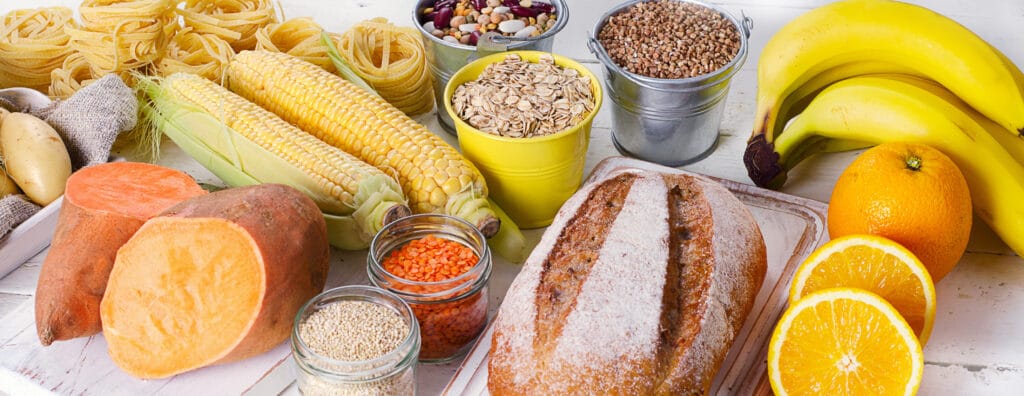Nutrition Advice, Weight Loss
Slow release Carbohydrates for weight loss
If your goal is to lose weight, the type of carbohydrates in your diet with have a huge impact.
Carbohydrates are scored on a scale called the glycaemic index according to how they affect blood glucose levels and therefore insulin release. An easy way to understand this is it is basically a scale of how sugary foods are. Glucose is used as a reference for the Glycaemic index as it has a GI of 100, glucose is one of the most sugary foods.
In the graph you can see how insulin is released following the consumption of high or low GI foods, the spike is followed by a crash which leads to carbohydrate cravings and hunger. The low GI leads you to feeling fuller for longer and controlling your hunger across the day.

GI is measured on a scale, Low GI is <55, Medium GI is 59-69 and High GI is 70>. If your aim is to lose weight you should try to eat foods that are Low GI as this will help you to stay fuller for longer. Here is a table illustrating the GI of various foods to help you understand this.
| Grains / Starches | Vegetables | Fruits | Dairy | Protein |
| Bran Cereal(42) | Asparagus(15) | Grapefruit(25) | Low Yogurt(14) | Peanuts(21) |
| Spaghetti(42) | Broccoli(15) | Apple(38) | Plain Yogurt(14) | Beans(40) |
| Sweet Corn(54) | Celery(15) | Peach(42) | Whole Milk(27) | Lentils(41) |
| Sweet Potato(61) | Cucumber(15) | Orange(44) | Soy Milk(30) | Kidney beans(41) |
| Cous Cous(65) | Lettuce(15) | Grapes(46) | Fat Free Milk(32) | Pinto Beans(55) |
| Wholegrain Bread(71) | Spinach(15) | Banana(54) | Chocolate Milk(35) | Black-eyed Beans(59) |
| Muesli(80) | Tomatoes(15) | Mango(56) | Fruit Yogurt(36) | |
| Baked Potato(85) | Chickpeas(33) | Pineapple(66) | Ice Cream(61) | |
| Oats(87) | Carrots(39) | Watermelon(72) | ||
| White Bread(100) | ||||
| Bagel(103) |
High GI is linked to high insulin release, consuming High GI foods leads to high and rapid insulin release which then leads to a crash and the craving for more carbohydrate. This is known as the insulin rollercoaster; you can read more about this in how to keep fuller for longer.
Unless you are an elite athlete that needs to replenish glycogen stores rapidly after exercise and your goal is weight loss you should try to avoid high GI foods and go for lower GI alternatives.
Whilst GI is a great indicator for how ‘sugary’ a food is glycaemic load is its also important to look at glycaemic load. Glycaemic load considers portion sizes and what foods are combined in what quantities and proportions. This gives a realistic indication of the glycaemic response of the entire meal in the proportion you consume in a meal. Like GI, meals are classified:
- Low:10 or less
- Medium:11 – 19
- High:20 or more

When foods are combined this will also affect their GL, for example adding protein, fibre and fat will lower the Glycaemic load of a meal and therefore blunt the insulin release. You can read more about this in balanced meals for weight loss.
For weight loss controlling insulin is key for most people and combining protein, fat, carbohydrate, and fibre is essential to ensure slow insulin release and help you to feel fuller for longer. Always consume these from natural, wholesome, un-processed sources.
Ultra Complete is a perfectly balanced meal with an ideal combination of the above from natural, nutritious ingredients to ensure you keep your insulin levels in check and feel fuller for longer.


